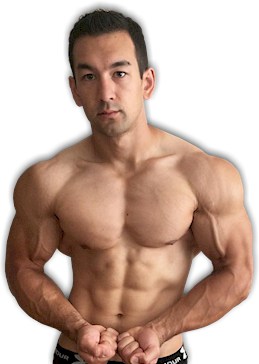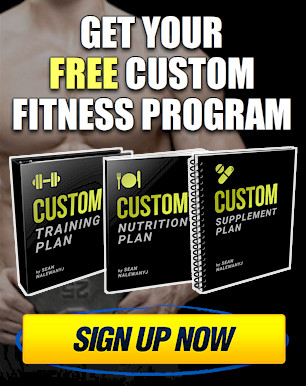BODYBUILDING AND FAT LOSS Q&A WITH SEAN NALEWANYJ: PART 1
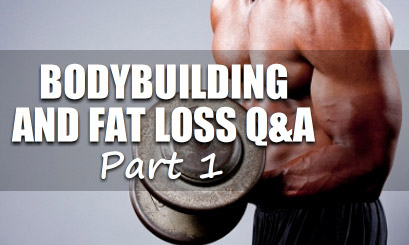
Over the past few years I’ve put out quite a large collection of muscle building and fat loss articles covering a huge range of different topics related to proper training, nutrition and supplementation.
With the article count on my blog now reaching the 250+ range, (and given that I acquire new readers every single day), I decided to take the next few weeks to dive back into the archives with a Q&A series that re-visits and summarizes many of the important points that I’ve previously discussed.
Most of you who follow me on a regular basis know that I tend to be quite thorough with each post that I make, going into reasonable detail and providing several supporting reasons for any recommendation that I make.
With this Q&A series, I’ll just aim to provide concise, straight to the point answers and hand you direct tidbits of information that you can take and apply to your program.
Each individual installment will answer 5 different questions, and I’ll be putting out around 12 Q&A’s in total over the next few weeks.
Let’s dive in…
Q: In terms of chest exercise selection, what would you consider to be the very best choices for maximizing gains in muscle size?
A: In my view, the best overall lift for packing on chest size would be a dumbbell press performed at a flat or decline angle.
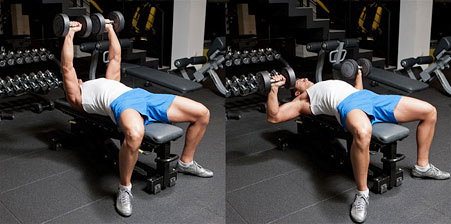
In comparison to barbell presses and most machine presses, dumbbell presses allow you to train the chest through a larger range of motion and also prevent strength imbalances and shoulder injuries by allowing each arm to move independently.
The flat/decline angle is also the superior choice for building overall pec muscle since it places the resistance in line with the lower sternocostal fibers of the chest where the vast majority of the mass is located.
The upper clavicular fibers should still be given some direct attention in order to ensure full stimulation of the upper chest though, and an incline dumbbell press will be the most effective way to target that portion.
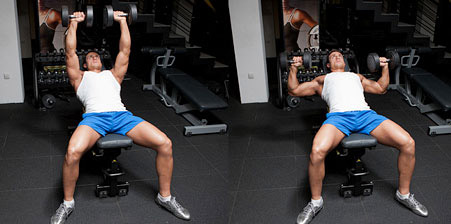
Finally, you can include a fly exercise to round out your chest workout and really isolate the pecs with minimal involvement of the front delts and triceps.
Cable flys will be your best bet here, as they provide consistent tension on the chest throughout the entire range of motion, whereas dumbbells only hit the chest to a significant degree in the lower/mid portion of the range due to the direction that gravity is pulling the resistance.
I’d recommend performing these at a decline angle, and they can be done either standing (pulling the cables from high to low) or on a decline bench that is positioned inside of a cable stand.
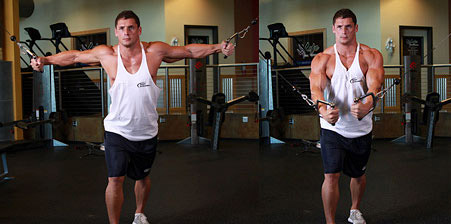
Q: Are weight gainer shakes a good choice for naturally thin guys looking to bulk up?
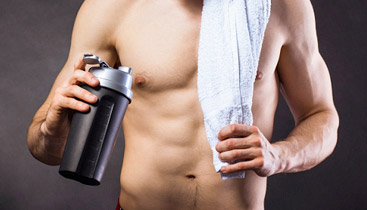
A: Most standard commercial weight gain powders are really nothing special and are typically made up of a simple combination of whey protein and simple sugar (usually matodextrin). They may be high calorie, but they really don’t provide much in the way of vitamins, minerals, fiber and other micronutrients.
If you find that you have a small appetite and/or the convenience of having a pre-made powder to take with you on the go is of particular benefit to you, then a weight gainer can be an acceptable option as long as it is treated as a supplemental source and only makes up a relatively small portion of your total calorie intake for the day.
However, if you have a few extra minutes on your hands and have access to a blender and a few basic ingredients, a homemade high-calorie shake is a far superior option.
By using whey as the protein source (egg or casein are acceptable as well) and blending it along with your own whole-food carbs (fruit, oats and yogurt are all great choices) and some healthy fats (such as natural nut butters or healthy oils), you can still get that high calorie shake you’re after but in a far more nutritious and better-tasting way.
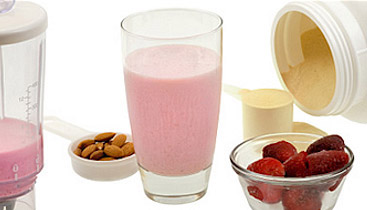
Here’s a basic weight gainer shake recipe I’ve used for many years that provides about 800 calories (77g protein, 79g carbs, 20g fat) and tastes great…
– 10 ounces skim milk
– 2 scoops whey protein (chocolate, strawberry or any flavor you like)
– 1/2 cup oatmeal (pre-blend separately first, then add to the shake and blend in again)
– 1 large banana
– 2 tablespoons natural peanut butter
– Pinch of cinnamon
– 3-4 Ice cubes
Q: Does performing cardio on an empty stomach burn fat more effectively in comparison to having a meal first?
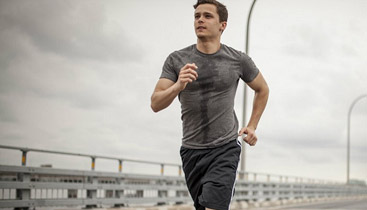
A: Based on the available evidence, I strongly doubt that going the “fasted cardio” route is of any measurable benefit for improving fat loss, and it may actually have some potentially negative effects as well.
Fasted cardio does appear to increase lipolysis (the amount of fat that is broken down), but does not increase fat oxidation (the amount of fat burned). In other words, fasted cardio causes the body to break down more fat than it can actually use for energy.
And when it comes to fat loss, the limiting factor is fat oxidation, NOT lipolysis. In the end, those fatty acids that aren’t used for fuel are simply re-stored as body fat.
Most people way over-simplify how the body’s energy systems work, and it’s far more complicated than the simple logic of “no food in the stomach means fat is burned for energy” while “having food in the stomach means carbohydrates are burned for energy”.
Its specific use of fuel during exercise is constantly changing and is affected by a ton of different internal factors, such as different hormones and enzymes. The attempt to burn greater amounts of fat by exercising on an empty stomach is an extremely simplistic approach to a far more complex overall picture.
If anything, fasted cardio is likely the inferior choice in comparison to having a meal first, as it can increase the chances of muscle loss and decrease overall workout performance.
Q: What’s the deal when it comes to leg extensions? Some say they’re a useful quad building exercise, while others say they’re worthless and hard on the knees.
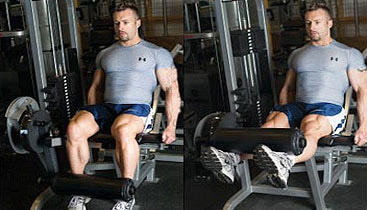
A: Personally, I would place leg extensions in the “optional” category, and although certainly not an essential quad exercise, they can be useful in 3 main situations:
1) You want to include some additional volume for your quads but you’re already very physically and/or mentally fatigued from your heavy compound lifts.
2) You have lower back issues and need a quad exercise that doesn’t stress this area.
3) You want to perform high rep work for your quads but find that your cardiovascular system becomes the limiting factor on bigger movements like squats, lunges or leg presses.
If you have otherwise healthy knees and don’t experience any discomfort when performing leg extensions, I don’t believe they pose a significant risk as long as you adjust the machine properly to your individual body structure, execute each rep using a slow/controlled cadence, stick to higher reps and focus on very slow and gradual progression in weight.
Q: What is the ideal resting time between sets if one’s goal is to maximize muscle hypertrophy?
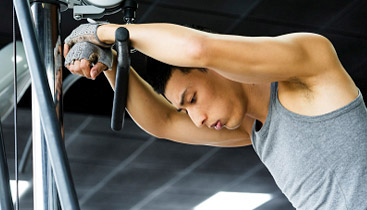
A: I’ve never been a fan of set rest periods in between sets for the simple reason that it’s highly variable and completely depends on which exercise is being performed and what percentage of your maximum effort is being exerted.
Training all the way to failure would obviously increase the need for rest in between sets in comparison to training a couple reps short of failure, as would performing a big compound exercise in comparison to a smaller isolation exercise.
A moderate intensity set of tricep extensions might only require 60 seconds of rest or less for full recovery, whereas a high intensity set of squats or deadlifts might have you resting 3 minutes or more.
The simple answer I would give here is that you should just listen to your body and only perform your next set when you feel fully recovered from the previous one and have 100% of your available physical and mental strength back intact.
If your central aim in the gym is to build muscle size as effectively as possible, then your goal should be to move maximum weight for maximum reps (using proper form and within your given rep range of course), and intentionally short-circuiting your rest periods before you’ve adequately recovered will simply minimize the amount of total muscular overload you can achieve on the subsequent set.
Just make sure you aren’t taking any more rest than you truly need in order to ensure that you move through your workout as efficiently as possible.
Hope you found this Q&A helpful and stay tuned for Part 2 coming soon!
If you found this article helpful, make sure to sign up for your FREE custom fitness plan below...



